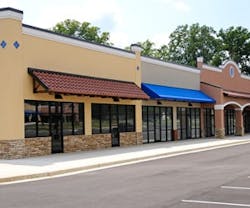Savvy Store Design in an Age of Instant Books and Endless ‘Apps’
Store design always been driven by the need to make the customer experience as compelling as possible. But, in a society where shoppers can download Kindle bestsellers or shop on-the-go with iPhones and netbooks, retailers must rethink how they use design to drive traffic and boost sales in brick-and-mortar stores.
Joseph Bona, president of the Retail Division at CBX, says, “Shoppers are redefining how the game is played.” During The Power of Retail Design, a panel discussion at the National Retail Federation’s 99th Annual Convention & Expo, Bona also indicated that customers do still go to brick-and-mortar stores. “But,” he says, “they’re also taking full advantage of high-tech tools that are powering up and evolving at a blistering pace. This puts the onus on designers to create extraordinarily compelling in-store experiences – experiences that are fully integrated with retailers’ brand identities, operational capabilities, and the fast-changing behaviors and preferences of their core customers.”
Bona cites bold moves in store design that have enabled specialty retailers and other chains to set themselves apart from competitors. “One example is Hollister,” he notes. “The teen apparel retailer changed the way people think about its stores by bucking the status quo at the mall. Instead of having floor-to-ceiling glass storefronts, Hollister ‘boarded up’ and created cave-like store entrances. This gave shoppers the sense that, simply by walking in, they were about to embark upon a distinct experience.”
Skillfully executed, game-changing approaches like this can work in any retail category, says Bona. Petro-Canada’s Neighbours store, for example, has been turned into something that looks and feels more like Panera than a typical convenience store. “The result changed shopper behavior and turned Neighbours into a destination for planned purchases vs. impulse-driven purchases. Through design, Neighbours stores now have a warm, inviting atmosphere – a blend of convenience and experience that calls to mind something between a corner store and a café,” says Bona.
Clear communication, too, is a critical component of effective in-store design, comments Bona. “The in-store experience, of course, is also a key communication channel. All of us in branding and design should keep in mind that shoppers demand authentic and transparent messaging. It’s a bit of a backlash in the wake of the housing collapse, Wall Street bailouts, and trends like greenwashing.”
As important as it is to communicate effectively, craft compelling experiences and develop innovative retail concepts, Bona says, such efforts must stay grounded in operational and budgetary realities. “An integrated approach is what is required. When you’re looking to do a game-change – something totally new that actually changes consumer behavior – you have to make sure you have the internal capability to deliver.”
Likewise, store design should be about the customer experience rather than an abstract reflection of ethereal ideas about brand. “Today, store design is all about the end-user: How do we communicate from the exterior? How do people interact with and within the space? How do we communicate the point of difference we offer? Self-referential branding with an interior focus is a thing of the past,” says Bona.
